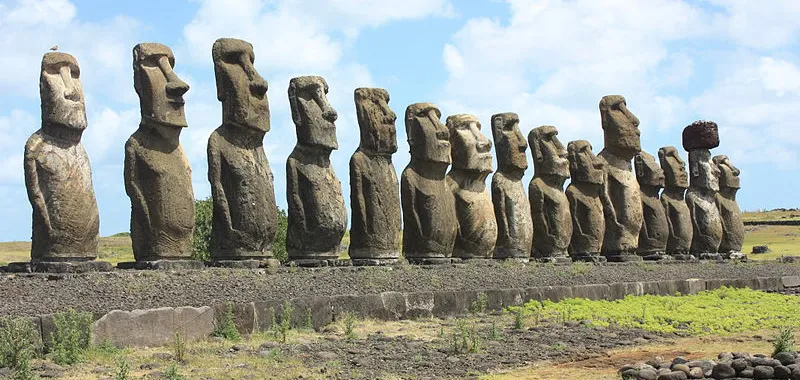There is plenty to explore in terms of the narratives, symbolism, and analysis of artwork, objects and culture. Especially fascinating to the historians and art lovers are outstanding sample of the halau in statuettes under consideration, which are mysterious and symbolic idols. Contemporary archeology of artifacts that originate in earlier epochs raises concerns about its functions and symbolism.
Unraveling the Mystery: What are Halau in Statuettes?
Now, let’s identify what halau are before we get into the questions revolving around their depiction in statuettes.
- Definition: Halau in statuettes generally refer to small and possibly elaborated sculptures in the form of human or human like statues. Such figures can be depicted in various ways: with symbols, ornaments and attributes. Allowing a guess to be made as to their purpose and meaning.
- Material and Style: It is important to note that the materials utilized in constructing the halau of statuettes are as rich in variability as the materials that have been used in the manufacture of ancient Hawaiian statues and the statues themselves.
- Geographical Origins: The concept of ‘halau’ has been found in statuettes all over the world from ancient Egypt and Mesopotamia to the Americas and other continents, although the term might be charged with very particular cultural meanings within specific contexts.
The Questions Surrounding Halau in Statuettes
The enigmatic nature of halau in statuettes gives rise to a multitude of questions that continue to intrigue researchers and scholars:
1. What role does such statuettes serve?
- Religious and Ritualistic Significance: The people of Hawaii used statues for religious and ritual purposes and created many of the halau in statuettes. Perhaps people applied them in worship rituals, as gifts to gods or spirits, or as symbols of the spirits’ persons.
- Symbolic Representations: Some suggest that some of the halau depicted in the statuettes in halo may have represented ideas such as fertility, power, or status.
2. Who created these statuettes and for whom?
- Artisans and Craftsmanship: Setting up of halau in statuettes was likely to involve capable craftsmen with indispensable understanding of the materials, process as well as artistry.
- Patronage and Social Context: The creation of these artefacts may well have involved sponsorship from those with the wherewithal. And desire to commission such pieces.
3. What does it symbolize to have these attributes on these statuettes?
- Iconography and Symbolism: The analysis of the symbols and attributes depicted in the statuettes of halau is necessarily fundamental to comprehending the full meaning of such objects.
- Decoding the Message: I found that the interpretation of several artifacts involves aforementioned disciplines such as archaeology, anthropology, art history and religious studies.
4. In what manner do these statuettes signify culture?
- Reflecting Beliefs and Values: Halau in statuettes can offer anthropological information about the cultures, which created these figures.
- Connecting to Art and Cultural History: Studying halau in statuettes we can acquire more profound understanding of the cultural heritage and the history of art development.
Studying and Identifying Halau in Statuettes
To address the questions surrounding halau in statuettes, researchers employ a variety of methods:
- Museum Collections: Halau are preserved in museums throughout the world as statuettes. And a vast array of them are available for analysis by the researchers.
- Interdisciplinary Approaches: Scholars have to conduct interdisciplinary analysis due to the reasons of halau in statuettes. Professionals from many fields including archaeologists, anthropologists, art historians, and theologians have to be involved.
- Technological Advancements: For instance, 3D scanning and imaging practices can reveal the he/she craftsmanship. And the type of materials used in constructing halau in the statuettes.
FAQs
This paper will strive to define the difference between a halau in statuette and the halau figurine.
Though people use the two as two forms of the same thing, ‘halau in statuette’ could actually carry different cultural meanings. And/or religious meaning as the type when compared to strictly a figurine kind.
What else can I read about sculpture of halau in statuettes?
You can look up works of art in the museum, go through academic journals and publications, attend lectures and workshops. And search for information online with regard to symbolism of halau in statuettes.
In the present respect, to what extent can I have a halau in statuette?
Certain legal laws and moral standards strictly regulate the possession of the artifacts, just like antiquities. One must acquire statuettes legally and with the desirable ethical standards.
Conclusion
Halau in statuettes provide a great opportunity for those who aim at understanding the culturally significant past with its complexities and unexpected features. However, this research has certainly posed more questions than it answers, and it undoubtedly. Future study of the halau in statuettes will provide much more clarification to the unexplained mysterious sphere.























+ There are no comments
Add yours